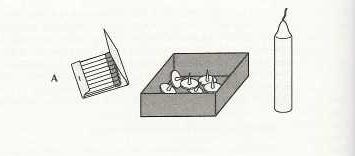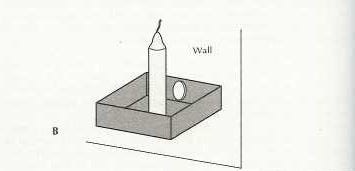
“We are powerfully imprisoned by the terms in which we have been conducted to think.” — Buckminster Fuller
One of the joys of many childhoods is building a den, a clubhouse or a spaceship out of the family couch, armchairs, blankets and a whole lot of imagination.
Thankfully, I had parents who allowed me to do so to enable our creativity (or just keep me quiet for a few hours). It is why my wife and I opted for a relatively inexpensive suite of furniture for our two young boys.
A great tragedy in our thinking is when we cannot see things as more than the function for which they were originally intended.
Functional Fixedness is a cognitive (thinking) bias where a person is unable to think of more creative uses for an object aside from its traditional use.
As we get older, knowledge and experience (doxa) increasingly displace imagination and our ability to see an object for anything other than its original purpose.
The chances are we all suffer from it and it is impacts our life and career paths.
Duncker’s 1945 Candle Problem
The candle task or Duncker’s candle problem measures the influence of functional fixedness on our problem-solving abilities.
The Task
If you want to solve this, don’t yet look at the second image below.
See image A below. Our task is to both fix and light the candle on a cork board in such a way that the candle wax won’t drip onto the table below it. Along with the candle, we may only use the box of matches and the box of thumbtacks. Solve.

The Solution
- Empty the box of thumbtacks
- Use the thumbtacks to nail the box to the wall
- Put the candle into the box
- Light the candle with the match

This seems quite obvious when you see the image. Due to functional fixedness, most of us can only see the box as a device to hold the thumbtacks. Very few people can perceive it as a separate and “functional” component available to be used in solving the task.
On this week’s innovation show we are joined by Dr Tony McCaffrey and we discuss other functional fixedness examples such as the sinking of the Titanic.
We are limited by functional fixedness in our lives and businesses every day.
The Mental Architecture of our Ancestors
“Common sense is the collection of prejudices acquired by age eighteen” — Albert Einstein
Doxa is the term Plato called the preconceived ideas and beliefs we have about the world. Doxa is a Greek word meaning common belief or popular opinion. Doxa are opinions we pick up from the world around us via our surroundings, our workplace, our family, friends, TV, Politics or whatever inputs we allow into our minds.
Plato believed that it was our duty to liberate ourselves from doxa by first recognising them and then scrutinising and criticising them.
As Pam Grout says, “Most of us are still operating out of the mental architecture of our ancestors. we’re simply recycling old tapes, knee-jerk conditioning, and automatic behaviours, most of which we picked up before we were five. We’re like Pavlov’s dogs, simply reacting to patterns we picked up before we had the intelligence to wisely choose.”
We get conditioned to think in a certain way. We are rewarded for thinking in such ways. It is “the way things are done”.
Only 12% of Fortune 500 companies from 1955 were still on the same list in 2016. The other 88% have either gone bankrupt or were merged or acquired. Many of the companies on the list in 1955 were victims of irrelevance, “me-too propositions”, disruption (through digitization or otherwise) and poor leadership. Many of the companies which failed were victims of the way they “thought” or you could say the way they did not think.
Leaders need to think differently. There are a plethora of ways to think achieve this.
Critical Thinking
Critical thinking is the skill of objective analysis of facts to form a sound judgment. There are several different definitions of critical thinking, which generally include the rational, sceptical, unbiased analysis or evaluation of factual evidence.
Critical thinking is not a prevalent skill in our workplaces, but it is a skill that can be learned with a set of tools. Once you learn these skills, it helps you manage the waves of disruption many businesses face. As part of our projects, we impart these skills to the Global leaders we work with in Katawave. It is incredibly rewarding to see how this can change how people view their business when they wear new lenses.
If you change the way you look at things, the things you look at change. — Wayne Dyer
On this week’s innovation show EP: 64 “Innovation through Thinking Sideways”, we talk to Dr Tony McCaffrey, CTO of Innovation Accelerator, Inc. and Director of Entrepreneurial Studies at The Eagle Hill School.
What other ways could people have escaped from the Titanic? How can we unlock talent in gifted people who are framed as less? We explore how we can be fixed in our mindsets and how there are techniques to unlock their thinking.
We discuss a new kind of school and approach with Eagle Hill School. We discuss how AI and humanity can co-operate for even better results than working separately.
The show is broadcast on RTÉ Radio 1 extra 3 times weekly and is on iTunes, TuneIn Stitcher Player FM and Google play. The website is here and below is Soundcloud.